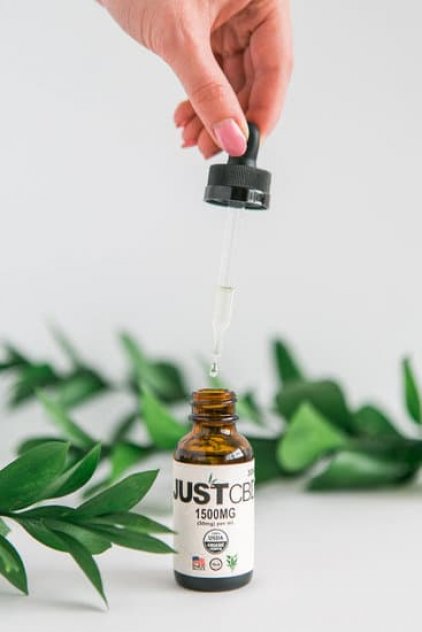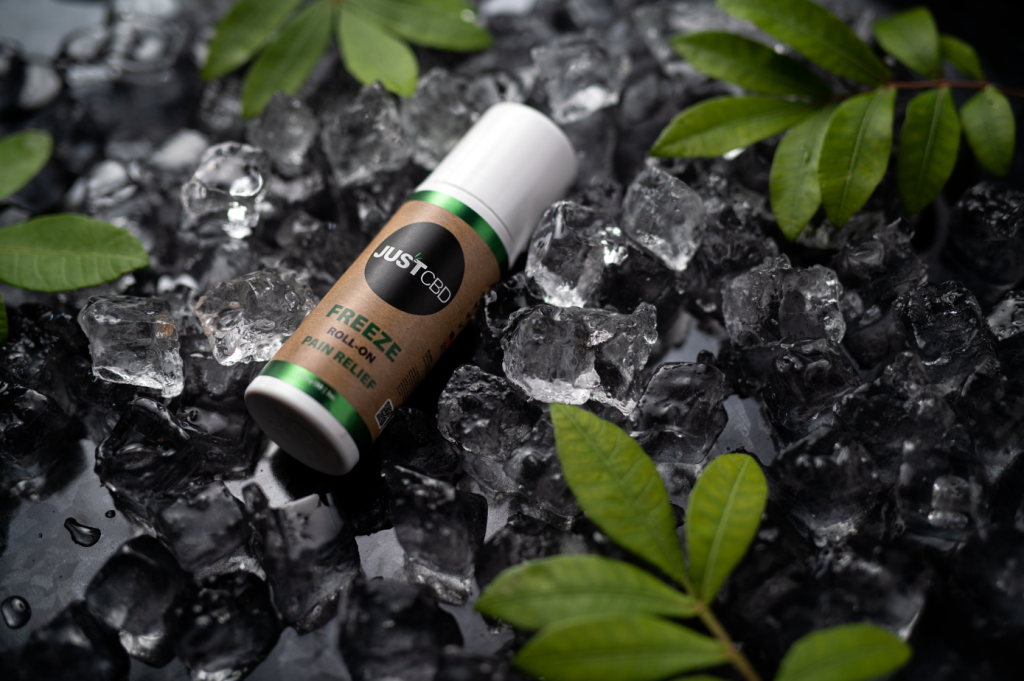"@context":"https://schema.org/","@type":"Store","name":"Buy CBD Online - CBD Oil, Gummies, Vapes & More - Just CBD Store","image":["https://chillhempire.com/uploads/images/image_750x_5e41ea9159f81.jpg","https://cbdlifemag.com/wp-content/uploads/2020/02/0D883202-0E27-4E72-90E0-C1C13B3DA233-768x1024.jpg","https://cbdlifemag.com/wp-content/uploads/2020/02/56C3841C-78DA-42D1-82C8-EAEFF4DCC047-768x1024.jpg","https://cbdlifemag.com/wp-content/uploads/2020/02/6EDC5BB7-1D44-4D7D-86A6-7D2CC51593FC-768x1024.jpg","https://cbdlifemag.com/wp-content/uploads/2020/02/DB59D8A2-E8E2-4C32-9210-9AA04928CC67-768x1024.jpg","https://cbdlifemag.com/wp-content/uploads/2020/02/B1A9C6F2-FA84-4BBB-A6C0-1631E6C6DFF7-1024x768.jpg","https://cbdlifemag.com/wp-content/uploads/2020/02/f582d6f5-ef35-4960-bacf-5aa3e40f9978.jpg","https://cbdlifemag.com/wp-content/uploads/2020/02/4AFBB58C-9605-44CA-B794-9A3D51369070-768x1024.jpg","https://cbdlifemag.com/wp-content/uploads/2020/02/165CDF18-A715-457E-949D-22FB0E10906B-768x1024.jpg","https://cbdlifemag.com/wp-content/uploads/2020/02/0689500F-D082-42B3-B4AF-EA0353B598DC-768x1024.jpg","https://cbdlifemag.com/wp-content/uploads/2020/02/539CB54C-7B16-4AE3-AEA1-3565D7D0D091-768x1024.jpg",""],"priceRange":"50","servesCuisine":"","address":"@type":"PostalAddress","streetAddress":"7351 Wiles Rd Ste 105 Coral Springs FL","addressLocality":"Florida","addressRegion":"FL","postalCode":"33067","addressCountry":"US","telephone":"(833) 458-7822"

Content
How Do Cannabinoids Work

Cannabis extracts and synthetic cannabinoids are nonetheless broadly considered unlawful substances. Preclinical and medical studies have instructed that they could result helpful to treat diverse ailments, including those related with acute or persistent ache. The discovery of cannabinoid receptors, their endogenous ligands, and the equipment for the synthesis, transport, and degradation of those retrograde messengers, has equipped us with neurochemical tools for novel drug design.
How Do Cannabinoids Actually Work In Your Body?
The body produces its personal endogenous cannabinoids, the most outstanding of which is anandamide. Anandamide is the chemical liable for activating cannabinoid receptors. It shares many of the identical pharmacological properties and mimics its actions.
Memorial Day plans with #JustCBD
Check out this article:https://t.co/9zpDzJO8z0#MemorialDay #Sale— JustCBD (@JustCbd) May 21, 2020
Cannabinoid Receptors
Basically, that little nug of weed that you’re bidding up has a whole lot of magic in it. There is slightly biology and chemistry right here (even anatomy!) so I’m going to attempt to simplify every thing as much as I can based mostly on the research that I’ve accomplished. To rapidly recap, there are many various kinds of cannabinoids, they usually each have different effects on the body primarily based on the particular endocannabinoid receptors with which they interact. Because endocannabinoid receptors are found everywhere in the physique, the potential therapeutic advantages from the plant’s cannabinoids are widespread.
A Brief Breakdown Of Cb1 Receptors
CBD inhibits the enzyme that metabolizes and degrades anandamide, improving the results by enhancing the body’s innate protecting endocannabinoid response. Notably, CBD additionally opposes the motion of THC on the CB1 receptor, thereby lessening the psychoactive effects of THC.

A Brief Breakdown Of Cb2 Receptors
It has been proposed that some cannabinoid results may be mediated by kind one vanilloid receptors (VR1). They are calcium-permeable, non-selective cation channel present in primary afferent neurons and play an necessary function in nociceptive responses. Therefore, relying on the concentrations of anandamide it would activate different receptors and produce reverse effects. This may be an essential presynaptic mechanism modulating ache notion at the spinal degree. Indeed, nociceptive major sensory neurons co-express CB1 and VR1 receptors to a excessive diploma, giving further support to a complementary role for these receptors .
This upregulation of central CB1 receptors following peripheral nerve injury signifies a job for them in these pathologies and also explain the therapeutic results of cannabinoid receptor agonists on continual ache situations as neuropathic ache. Chronic pain models related to peripheral nerve harm, but not peripheral irritation, induce CB2 receptor expression in a extremely restricted and particular method throughout the lumbar spinal twine. Moreover, the looks of CB2 expression coincides with the looks of activated microglia . Cannabinoid receptor agonists modulate nociceptive thresholds by regulating neuronal exercise , but additionally they relieve ache by appearing on non-nervous tissues.
While THC exhibits a sturdy affinity for CB1 receptors within the brain, lesser known cannabinoids such as CBN (cannabinol) are identified to bind to CB2 receptors within the physique. By targeting the proper cannabinoid on the right receptor, it is attainable to attain completely different results. Cannabinoid receptor agonists results in the central nervous system (CNS) embody disruption of psychomotor behaviour, short-time period reminiscence impairment, intoxication, stimulation of urge for food, antiemetic results, and antinociceptive actions . Insofar as ache is concerned, it is well known that cannabinoid receptor agonists have antinociceptive and anti-hyperalgesic effects at the peripheral and central (spinal and supraspinal) ranges, as has been demonstrated in acute and chronic ache models . Cannabinoid receptors and endocannabinoids are present in pain circuits from the peripheral sensory nerve endings up to the mind (Fig. (Fig.1).
Further double-blind placebo-controlled clinical trials are needed to evaluate the potential therapeutic effectiveness of various cannabinoid agonists-based mostly medications for controlling several types of ache. Each cannabinoid produces different bodily and psychological effects based on the actual receptors that they bind to. Delta-9-THC, extra simply known as THC, is essentially the most ample cannabinoid within the cannabis plant. It is also the cannabinoid that demonstrates the best level of psychoactivity (i.e. it’s liable for the “excessive” that users feel when they eat marijuana).
What Are Cannabinoids And How Do They Work?
This Year, Get the Best CBD Online Product for Dad#CBD #Article #JustCBD
Article:https://t.co/HPlr62oWWa
— JustCBD (@JustCbd) June 10, 2020
However, they have also been found in other tissues and organs elsewhere within the physique, together with the mind, though in much fewer numbers than CB1 receptors. Activation of CB2 receptors assist moderate the body’s immune response to pathogens, inflammation and ache regulation. Because these receptors are not as ample as CB1 receptors, concentrating on these receptors may be more practical in treating certain diseases with less probability of unwanted side effects. By binding with the cannabinoid receptors in the physique, they will control mood, immune function, memory, and extra. Because of those effects, they have recently become the target for an unlimited quantity of research into medical and therapeutic uses.

What Are Cannabinoids?
Therefore, depending on the character of the presynaptic terminal, endocannabinoids induce both suppression of inhibition or suppression of excitation, particularly depolarisation-induced suppression of inhibition (DSI) or of excitation (DSE) . However, if the CB1 receptor agonist stays current, the depolarisation phenomenon is blocked by occlusion and inhibitory inputs are transient. This is why cannabinoid receptor agonists can not mimic the identical physiologic results of locally launched endocannabinoids. This may be necessary within the management of neural circuits, similar to nociceptive signalling. The first endocannabinoid isolated (from porcine brain) and structurally characterised was arachidonylethanolamide (AEA), generally designated anandamide .
On its own, the anandamide stage in the body is very low and is shortly broken down by an enzyme generally known as fatty acid amide hydroxylase, or FAAH. When anandamide interacts immediately with exterior cannabinoids corresponding to THC or CBD we see very different outcomes. When an individual smokes marijuana, THC overwhelms the EC system, quickly attaching to cannabinoid receptors all through the mind and body. This interferes with the power of natural cannabinoids to do their job of nice-tuning communication between neurons, which might throw the entire system off balance.
Moreover, the CB1receptor antagonist AM251 can block the antinociceptive impact of those NSAIDs administered intrathecally in a model of inflammatory ache (formalin test) . In the identical means, indomethacin loses efficacy on this mannequin of pain in CB1 knockout mice . However, this is probably not the only mechanism as a result of intraperitoneal administration of a nonselective FAAH inhibitor (phenylmethylsulfonyl fluoride) doesn’t affect the response to the formalin take a look at, whereas AM251 still antagonises its analgesic effect .
An alternative speculation means that the COX-2 enzyme can metabolise the endocannabinoids (like anandamide and a pair of-AG) and that epidural administration of NSAIDs prevents anandamide destruction by inhibiting the action of COX-2 . Therefore, the administration of NSAIDs will increase the amount of anandamide by impeding its metabolisation by way of inhibition of the effect of COX-2 and/or FAAH. Cannabinoids act on many forms of receptors, together with cannabinoid receptors, and due to this fact have therapeutic potential in the physique. The psychoactive results of some artificial and plant-primarily based cannabinoids has restricted their use in clinical apply.
Cannabinoids can also have necessary results in other elements of the physique, and their role within the immune system is significant. As an example, cannabinoid receptors have been discovered on many immune cells, and will modulate their production . By controlling the body’s immune response, cannabinoids could have secondary effects on the physique’s response to ache.
However, the existence of undiscovered cannabinoid receptors has not been dominated out and a few cannabinoid analgesic effects may be mediated partially by such receptors . The mobile actions of cannabinoids on supraspinal and spinal descending antinociception pathways have additionally been studied . CB1 receptors present in the PGA and dorsolateral funiculus intervene within the essential descending controls in cannabinoid-mediated analgesia . Messages from the mind again to the periphery modulate the acquired nociceptive data by, for example, ordering launch of chemical substances with analgesic effects. Moreover, when the CB1 cannabinoid agonist was given intravenously, the noxious heat-evoked activity of those neurons was not suppressed in animals with spinal transection or after administration of CB1 receptor antagonist.
- Basic analysis on how cannabinoid receptors and endocannabinoids intervene in ache mechanisms is progressing quickly.
- One of the drawbacks of investigating cannabinoids is their typification as substances of abuse.
- The mixture of cannabinoids with synergistic analgesic substances is fascinating because it might improve the efficacy and safety of treatment.
- CB1 receptors are current in nervous system areas concerned in modulating nociception and evidence helps a job of the endocannabinoids in ache modulation.
- Currently available therapies, usually opioids and anti-inflammatory medication, are not at all times effective for sure painful circumstances.
- The discovery of the cannabinoid receptors within the Nineties led to the characterisation of the endogenous cannabinoid system in terms of its components and quite a few primary physiologic capabilities.
CBN can do most of the same things THC can do – including kill ache and cut back eye pressure in glaucoma patients. CBN does this stuff with fewer of the psychoactive effects of THC (CBN can both be mildly psychoactive or not psychoactive in any respect). In addition to this, CBN is the cannabinoid with the strongest sedative properties. Think of the endocannabinoid system as a network of electrical retailers within the central nervous system, including the brain. When numerous chemical compounds plug into these retailers, known as cannabinoid receptors, the receptors activate and specific issues occur.
THC is present in massive amounts in marijuana crops and, unlike CBD, can adhere on to CB1 and CB2 receptors. It’s important to note that THC is assessed as a Schedule I substance, making it unlawful to use and promote in many states. While CBN is a minor player among the various kinds of cannabinoids, it’s a strong compound with some fairly significant health advantages.

Specifically, hashish extracts have proven effectiveness to relief some signs of the sufferers with multiple sclerosis, mainly for pain and spasticity. CB2 receptor selective agonists with no central results are different promising pain therapy underneath investigation. Adequately sized and designed, doubleblind placebo-controlled scientific trials are wanted to evaluate the potential purposes of cannabis-based medications as novel and effective therapeutic drugs for controlling several types of ache. Different validated animal fashions are used to explore the analgesic effects of cannabinoid compounds.
CB1 receptor is concerned in the attenuation of synaptic transmission, and a proportion of the peripheral analgesic impact of endocannabinoids may be attributed to a neuronal mechanism acting by way of CB1 receptors expressed by primary afferent neurons. However, latest findings recommend that CB1 receptors are additionally present in mast cells and should participate in some anti-inflammatory results. Thus, activated CB1 receptors present in mast cells induce sustained cAMP elevation, which, in turn, suppresses degranulation . CB2 receptors are expressed in a number of kinds of inflammatory cells and immunocompetent cells.
This product has undergone section III placebo-managed trials, which show that it reduces neuropathic pain, spasticity, and sleep disturbances. Furthermore, animal mannequin of multiple sclerosis, have found different advantage of cannabinoid receptor agonists, since they seem to exert CB1 receptor-mediated neuroprotective results that may be benefitial for the neurodegeneration occurring in MS . Another promising target for therapeutic intervention is the fatty acid amide hydrolase (FAAH) enzyme, which is liable for intracellular anandamide degradation . AM374 (palmitylsulfonyl fluoride) is a potent FAAH inhibitor , preventing the hydrolysis of endocannabinoids and, therefore, growing their synaptic ranges and elevating cannabinoid receptors exercise (Fig. (Fig.2).
The name comes from the Sanskrit word ananda, which implies “bliss”, and amide. Bliss means happiness that invokes physiologic and psychologic harmony and, in Buddhism, signifies an elevated consciousness since Ananda was one of many principal disciples of the Buddha. Anandamide acts in pain, melancholy, urge for food, reminiscence, and fertility (due to its uterine synthesis). Anandamide is synthesised enzymatically in brain areas which might be necessary in memory and higher thought processes, and in areas that management motion. Anandamide, or arachidonylethanolamide, is an amide spinoff of arachidonic acid and ethanolamine.
Agonist-activated cannabinoid receptors, modulate nociceptive thresholds, inhibit release of professional-inflammatory molecules, and display synergistic effects with different techniques that influence analgesia, especially the endogenous opioid system. Cannabinoid receptor agonists have proven therapeutic worth towards inflammatory and neuropathic pains, circumstances that are often refractory to remedy. Although the psychoactive effects of these substances have limited medical progress to check cannabinoid actions in pain mechanisms, preclinical research is progressing rapidly. In this evaluate, we are going to look at promising indications of cannabinoid receptor agonists to alleviate acute and continual ache episodes. Recently, Cannabis sativa extracts, containing known doses of tetrahydrocannabinol and cannabidiol, have granted approval in Canada for the relief of neuropathic pain in a number of sclerosis.
Thus, cannabinoid compounds can modulate hyperalgesia of varied origins and they’re effective even in inflammatory and neuropathic pain , which are situations usually refractory to remedy. In the CNS, though WHAT IS HEMP EXTRACT? CB2 receptor mRNA has not been detected in the neuronal tissue of human or rat brain, a task in antinociception in inflammatory processes of the nervous system can’t be excluded because of its presence in activated microglia .
Studies have been made with cannabidiol derivatives developed to inhibit peripheral pain responses and inflammation after binding to cannabinoid receptors. Interestingly, a few of these cannabidiol derivatives didn’t have central nervous system results, however maintained their antinociceptive and anti inflammatory properties. This means that centrally inactive artificial cannabidiol analogues may be good candidates for the development of analgesic and anti inflammatory medication for peripheral circumstances . Not all antinociceptive results of cannabinoid compounds are mediated by cannabinoid receptors.
Thus, the antinociceptive efficiency of a sequence of cannabinoid receptor agonists correlates strongly with their capacity to displace radioligands from the cannabinoid receptor and to inhibit adenylate cyclase. Also, cannabinoid-induced antinociception could be attenuated by pertussis toxin and different substances that intrude with the sign transduction of CB1 receptors related to protein G . Finally, cannabinoid receptors, each CB1 and CB2, are upregulated in fashions of chronic ache. Therefore, one response of the physique to chronic ache is to extend the number of these receptors, suggesting that their function in such conditions could also be essential.
In cerebellum, hippocampus, and neocortex, FAAH is expressed at excessive ranges in the somatodendritic regions of neurons postsynaptic to CB1-optimistic axon terminals. Thus CB1 receptors and FAAH have a detailed and complementary anatomical distribution . Schematic representation of a GABAergic synapsis, containing CB1 receptors, to indicate potential targets for therapeutic intervention. Endocannabinoids are synthesised in membranes of neurons and different nervous cells and launched to the synaptic house to activate presynaptic CB1 receptors.
Temporary inactivation of neural exercise within the RVM in rat brainstem circumvents the analgesic effects of systemically administered cannabinoids, while leaving motor activity effects untouched . This displays cannabinoid receptor agonists actions that specifically target sensory pathways passing via the RVM. Noxious stimulation evokes enhanced launch of the anandamide, as observed within the PAG of brainstem , which is evidence that endocannabinoids modulate nociceptive data. Further affirmation of the function of the endocannabinoid system within the control of ache is that the blockade of cannabinoid receptors, whether or not by antagonists, antibodies, or genetic deletion, inhibits or attenuates pain notion .
CBD, the most common non-psychoactive cannabinoid discovered hemp and cannabis, interacts with varied receptors within the brain. So, although plant cannabinoids might interact with the identical receptors as endogenous endocannabinoids, additionally they interact with different receptors. This is what causes the effects of endocannabinoids and plant cannabinoids in the body to vary. This activation brings the neurotransmitters back into steadiness, leading to decreased seizure activity.
Endocannabinoids possess submicromolar affinity for cannabinoid receptors and act as retrograde signal molecules in synapses. Despite the similarity of their chemical buildings, endocannabinoids are produced by their very own biochemical pathways. They are synthesised regionally on demand in postsynaptic terminals, which requires Ca2+ influx, and released in chosen areas to activate presynaptic cannabinoid receptors situated in particular small areas (Fig. (Fig.2). CBD and THC are known as phytocannabinoids [cannabinoids created in vegetation] and act similarly to endocannabinoids. Phytocannabinoids play a major position within the therapeutic results of hashish as they mimic cannabinoids which are produced in the body.

One of the drawbacks of investigating cannabinoids is their typification as substances of abuse. However, compounds blunting extreme ache enable sufferers to carry out daily actions more simply, so the potential advantages ought to be weighed against attainable opposed effects.
In addition, different compounds just like the N-acylethanolamines block anandamide degradation . Knockout mice lacking FAAH display elevated concentrations of anandamide in brain and are extra delicate to the organic actions of anandamide . Cannabidiol (CBD) is one other major constituent of the Cannabis sativa plant, having the same therapeutic effects than THC (analgesic, anti-inflammatory, and others), however with a special pharmacologic profile.
Humans (and plenty of animals) have cannabinoid receptors which might be positioned within the mind and within the central nervous system (we’ll get to that), THC binds to these receptors, that is how we will reap the advantages of cannabinoids for health and for enjoyment as well. The share of THC and CBD is all the hype these days, as if these are the one two elements within the cannabis plant, nevertheless, this wonderful flower of ours is way more complex than that.
It is synthesised by hydrolysis of the precursor N-arachidonoyl phophatidylethanolamine, which is catalysed by the enzyme phosphodiesterase phospholipase D . After launch from the postsynaptic terminal, anandamide interacts with presynaptic cannabinoid receptors. It is rapidly removed from the synaptic house by a high-affinity transport system present in neurons and astrocytes. Once internalised, anandamide is hydrolysed by the enzyme fatty-acid amide hydrolase (FAAH), an intracellular membrane-sure enzyme.
When a particular cannabinoid or combination of cannabinoids attach to these particular receptors, it triggers a collection of modifications in the way in which cells ship alerts to different cells all through the body. In addition, there’s evidence that the addition of cannabinoid compounds to brain tissue sections originates an accumulation of arachidonic acid . The enhancement of CB1 receptors exercise by some NSAIDs (indomethacin, fluribuprofen) has been confirmed .
The most typical cannabinoids in cannabis sativa are Δ 9-tetrahydrocannabinol (THC) and cannabidiol (CBD). Other cannabinoids embody cannabinol, cannabigerol, tetrahydrocannabivarin and cannabidivarin. Plant cannabinoids can interact with CB1 and CB2 receptors like endocannabinoids.
For occasion, antagonists of the CB1 receptor don’t block antinociception induced by systemic administration of anandamide. In these mice, lacking practical CB1 receptors, sure cannabinoid receptor agonists have antinociceptive effects in the hot-plate or formalin tests .
Like endocannabinoids, they bind to the receptors to help return our physique to homeostasis. CB1 receptors are thought to be situated primarily in your central nervous system and your mind. CB2 receptors have a restricted presence within the mind and exist principally in other areas, together with immune cells, reproductive organs, the gastrointestinal tract, and more. CB1 receptors work primarily on the mind and are predominantly located in the central and peripheral nervous techniques. CB2 receptors, then again, work mainly on the body and are found largely in the immune system.
Possible mechanisms of this CB2-mediated effect embody the attenuation of NGF-induced mast cell degranulation and of neutrophil accumulation, each of that are processes recognized to contribute to the generation of inflammatory hyperalgesia . Therefore, since activation of CB1 receptors is associated with central side effects, together with ataxia and catalepsy, selective CB2 receptor agonists have the potential to treat ache without eliciting the centrallymediated side effects. A CB2-mediated effect exists, consisting in the indirect stimulation of opioid receptors located in primary afferent pathways , as shall be described in additional element in the next part.

Enhancement of cannabinoid receptors activity could be obtained by totally different pharmacological manipulations as, for example, administering exogenous cannabinoid receptor agonists or inhibiting either the reuptake or the degradation of the endocannabinoids. Cannabinoids are the chemical compounds which give the hashish plant its medical and leisure properties. Cannabinoids like THC and CBD interact with completely different receptors within the body to provide a variety of effects, similar to feeling high. CB2 receptors are discovered mostly within the cells that make up the immune system.
Currently obtainable remedies, generally opioids and anti inflammatory medicine, usually are not all the time effective for sure painful situations. The discovery of the cannabinoid receptors in the Nineties led to the characterisation of the endogenous cannabinoid system in terms of its components and quite a few basic physiologic features. CB1 receptors are current in nervous system areas involved in modulating nociception and proof supports a job of the endocannabinoids in ache modulation. Basic research on how cannabinoid receptors and endocannabinoids intervene in ache mechanisms is progressing rapidly. The combination of cannabinoids with synergistic analgesic substances is attention-grabbing because it may enhance the efficacy and safety of remedy.
Microinjection of cannabinoids into a number of mind areas, together with the posterolateral ventral thalamus (an space with many nociceptive neurons receiving spinothalamic pathway inputs), amygdala, RVM, and PAG, produces antinociception . The neurotransmitters whose release What is full-spectrum CBD Oil? is inhibited by activation of cannabinoid receptors embody L-glutamate, GABA, noradrenaline, dopamine, serotonin, and acetylcholine.
In order to counteract these results, complementary analyses are used to show the antinociceptive effects of cannabinoids. In this context, cannabinoids block spinal c-fos expression in response to noxious stimulation and suppress the electrophysiologic responses of spinal twine neurons . In the spinal wire lamina receiving major afferent fibres, noxious stimuli enhance c-fos expression, making it a good marker for spinal nociceptive activity. Following noxious heat stimulation, cannabinoid receptor agonists diminish stimulation in deep dorsal horn neurons, whereas the CB1-specific antagonist SR141716A facilitates nociceptive responses .
This synergistic impact of a number of cannabinoids working in concert is called the entourage effect. Smoking cannabis not solely has helped to cease spasms, but has halted the progression of a number of sclerosis. Although smoking hashish is illegal in some international locations, estimates suggest that 10% to 30% of MS sufferers in Europe smoke cannabis to ease the painful and disabling signs of the illness.
Hi, We are sorry you had this inconvenience. Please send an e-mail to [email protected] with your order number and our customer service team will assist you. Thank you!
— JustCBD (@JustCbd) May 28, 2020
The endocannabinoids, or endogenous cannabinoids, are a family of bioactive lipids that activate cannabinoid receptors to train their results, modulating neural transmission. They are current in solely small amounts in mind and different tissues and participate within the regulation of various cerebral functions, including pain perception, mood, appetite, and memory. Exogenously administered cannabinoid compounds of synthetic or natural origin mimic their results. Even though we nonetheless have a lot to learn about the relative roles of different endocannabinoids, they look like promising potential targets for manipulation, for example, to gradual their degradation for analgesic proposes.
Aromas and flavors come from terpenes and flavonoids, while most of the medicinal and psychoactive components come from cannabinoids. There is also the “entourage effect” (supply) where many of the elements including cannabinoids, terpenes and flavonoids all act collectively synergistically to regulate the general psychoactive and therapeutic results of cannabis.

